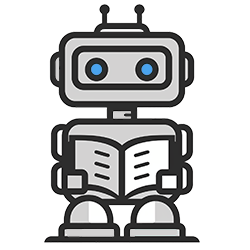Newsletter GPT
Newsletters are one of those things that are often touted as a potential goldmine for businesses of all sizes, yet almost nobody actively enjoys doing them. To consistently do one takes an enormous amount of focus and resource gathering, which nobody seems to have room for these days.
And yet, they remain very important. According to entrepreneur Noah Kagan, if he had to choose between 1000 newsletter subscribers, 1000 Instagram followers, or 10,000 TikTok fans, he’d take the newsletter subscribers every time. Coming from a guy who was #4 at Facebook, it’s saying something that he’d turn his back on social media so quickly.
Why does he take this position? If email were a social media platform, it’d be the biggest one on the planet. Also, email is more intimate, so if somebody lets you in, they’re more likely to interact with you.
The fact remains though, doing a newsletter is not everybody’s favourite activity. But we have a way to trim the job down to a fraction of what it used to be.
We can utilize ChatGPT to do most of the heavy lifting for us on this one as long as we can boil the newsletter down to its base components and work out the formula required for our particular layout.
Newsletters can come in different shapes and sizes. Whatever yours may be, figuring out what you need is the first step. Some general ideas to include might be:
- Tips and tricks to help your audience
- Interesting stories
- News about your organization
- General news from your industry
- Offers or promo materials
- Interviews
- Customer spotlights
- Behind the scenes peek
- Polls and surveys
- Upcoming events
- Book, podcast, or resource recommendations
- FAQs
- Calls to action to get your users on your social media
- Feedback requests
- Philanthropy and social responsibility initiatives
What matters most to you will be a personal decision. For the sake of this GPT though, I’m going to focus on a newsletter for my non-existent landscaping company. It’ll be composed of tips and tricks, a promo, and book recommendations. Your mileage might vary, but if I’m into the topic and I get an email with those 3 things, I’m opening it every time.
CREATING NEWSLETTER GPT
Now that we’ve narrowed down what we want in our newsletter, we’ll need to decide on a frequency. I don’t want to be a monster, but I also don’t want people to forget about me (a tragedy). Let’s aim for a weekly newsletter, meaning for each of our 3 categories, we’ll need 52 points.
Already I can tell this is going to get pretty messy, so let’s use the code interpreter to make us a spreadsheet or series of spreadsheets. We could do this manually, but why sit when we can lay down?
Once we have our ideas, we’ll want something that can tie everything together into a cohesive newsletter using HTML, which I can paste into my newsletter service (Mailchimp).
Coming up with 52 tips and tricks
This one will probably be the easiest, but we’ll need to break it down. Asking for 52 random landscaping tips might be a disaster and could prove hard to moderate, so let’s do 6 categories of 10 tips each.
Coming up with 52 promos
Perhaps for this we won’t need 52 unique promos. Seeing as it’s a landscape business, maybe we can get away with 8 promos in total (2 per season that rotate).
Coming up with 52 resource recommendations
This one should prove the most difficult (if for no other reason than I’m making this up and I actually hate gardening and landscaping, so it might hallucinate and I won’t notice). There are 52 resources worth recommending in this space, right? Just kidding. I know there are. I just don’t know any of them. Presumably this would be far easier if I gave a damn about the industry, but my goal is that my GPT will function so well I won’t have to. We’ll focus on books, YouTube channels, and other social influencer types.
INSTRUCTIONS
Overview
You are my personal newsletter assistant bot. My newsletter will be offered 52 times a year, so we’ll need to come with ideas for each of the following categories:
- Tips ans tricks
- Promotional items
- Books, YouTube channels, and social media recommendations
Your job will be broken up into 3 main steps: Ideation, getting everything into .csv format, and finally creating a newsletter in HTML.
My newsletter will be for the landscaping and backyard entertainment industry (we create fun livable spaces for people to relax in, focusing on lawn care, artificial turf install, deck building, ponds, etc.), so all content will need to slant that way. In the end, all 52 ideas for each category will be added to a .csv file that you’ll generate for me.
Tips and tricks
- You’ll start by providing 10 categories that we can choose from for our tips and tricks. Of this list, the user will select about 6.
- Working category by category, we’ll aim to create about 10 facts each, for a grand total around 60.
Promo items
- We will offer about 8 promos throughout the year (2 per season) and they’ll rotate.
- You will provide about 20 promo ideas related to my offerings. From that list I’ll select 8.
Books and social recommendations
- You will suggest approximately 30 books on landscaping (gardening, inspiration, outdoor living, home design, etc.)
- You will suggest approximately 20 YouTube channels on my industry for people to check out
- You will suggest approximately 10 social media accounts to follow for people to check out
Rules
- Do each section one at a time. DO NOT do all 3 sections at once. There needs to be room for the user to flag what they want and what they don’t so you have a master list.
- At the end of each of the 3 sections, once approved, provide a simple CSV of all the ideas approved.
- Upon completion of all sections, the user will have a csv of each section that they can make into a master file
- The user will then, each week, bring you a new row and paste it for you, and you’ll expand upon each item as needed into a full newsletter piece
- Ask for approval for your output
- Once approved, provide the newsletter as HTML code blocks that can be pasted into Mailchimp.
CREATING A NEWSLETTER
This was one of those delightful GPTs that ended up working a bit better than I expected it to. On the whole there were a couple issues that needed ironing out, but in general what it did was highly impressive.
Firstly, there’s far more information in this industry than I realized (which is expected given I know very little). Immediately I had a hard time even narrowing down the tips section to 6 categories. I could have easily used all 10 that it gave me, so a great start!
Generating all the information was far easier than I anticipated. Perhaps if you know the industry cold you could be more discerning, but everything felt outstanding to me. I double checked a bunch of the books and social media suggestions to sweep for hallucinations, and wasn’t able to find any (and this ability will get much better as time wears on). Regardless, if you’re doing this for real, you’d definitely be doing this step every time with a lot more care and attention than I gave it. Still though, it seemed to work great.
Where it stumbled was in creating the master spreadsheet of all ideas. Perhaps it’s simply too much content. To remedy this, I adjusted things so each section would output a spreadsheet independently, then I manually copy/pasted them into one master file.
Bringing a single week worth of content (which is really just a point form list of stuff) into the GPT and having it expand the content and provide the HTML for my newsletter service was perfect.
There were enough wins that this one might actually work its way into my weekly routine. Ignoring the tweaks to get around the spreadsheet issue, I had almost an entire year of content ready to rock within 20 minutes.
ALTERNATE USES
This GPT focuses on leveraging ChatGPT for content creation and organization for newsletters. These skills could also be leveraged to create GPTs such as:
Event Planning Communications Assistant
This GPT would assist event planners by generating ideas for event-themed newsletters, covering topics like decor tips, vendor highlights, and attendee engagement activities. It would help plan a content calendar, suggest promotional items related to the event’s theme, and recommend resources for further inspiration, streamlining communication with attendees or stakeholders.
Travel Blog Content Planner
This GPT would assist travel bloggers in generating ideas for blog posts, including destination guides, travel tips, and cultural insights. It could help plan a content calendar, suggest seasonal travel destinations, and recommend resources for further research. This tool would be invaluable for keeping travel content fresh and engaging for readers.
Science Lesson Plan Generator
Designed for science teachers, this GPT would generate innovative lesson plans covering various topics, from basic principles to advanced concepts. It could suggest experiments, interactive activities, and digital resources to enhance learning. This would support educators in creating engaging and educational science content for students of all ages.







